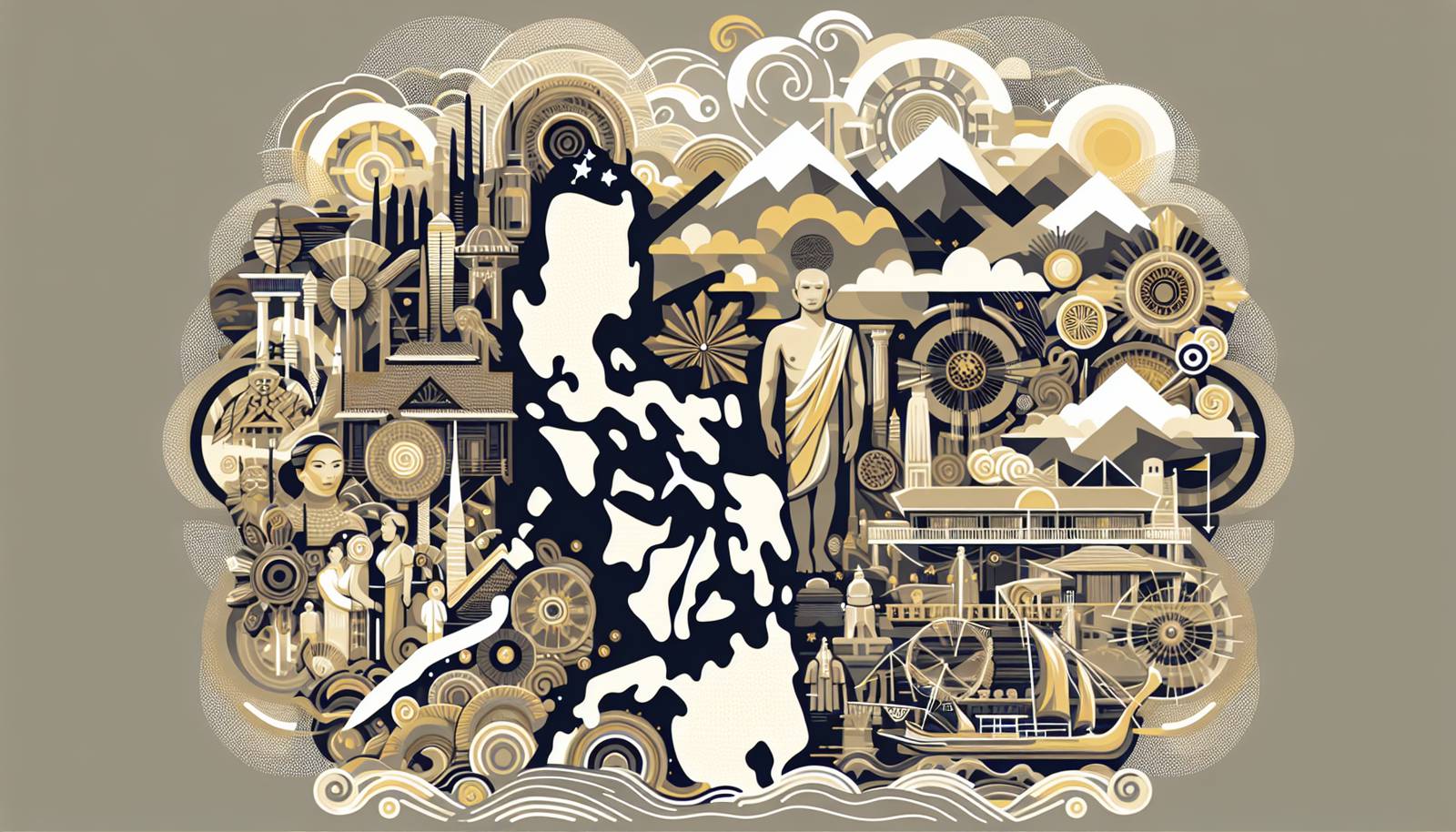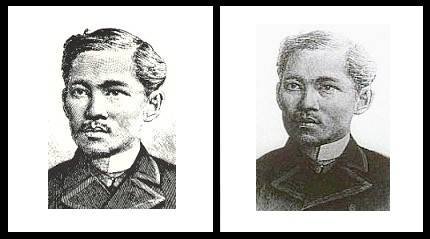
FAQ About José Rizal

Who was José Rizal?
José Rizal was a Filipino nationalist and revolutionary who is widely considered the national hero of the Philippines. Born on June 19, 1861, in Calamba, Laguna, Rizal was a polymath known for his significant contributions as a writer, particularly his novels Noli Me Tangere and El Filibusterismo, which highlighted social injustices during the Spanish colonial era.

What were José Rizal's most famous works?
José Rizal's most famous works are his novels Noli Me Tangere and El Filibusterismo. These books are critical of Spanish colonial rule in the Philippines and were influential in sparking the Filipino movement for independence. They exposed the corrupt practices of the church and the government under Spanish rule.

Why is José Rizal considered a national hero in the Philippines?
José Rizal is considered a national hero of the Philippines because of his dedication to advocating for significant reforms through peaceful means. His works inspired the Philippine independence movement and encouraged Filipinos to stand up against colonial oppression without resorting to violence. Rizal's martyrdom further solidified his place as a unifying symbol for Filipino nationalism.

How did José Rizal die?
José Rizal was executed by firing squad on December 30, 1896, in Bagumbayan, now known as Rizal Park, in Manila. He was accused of sedition, rebellion, and forming illegal associations, charges stemming from his writings and involvement in advocating for reform and independence from Spanish colonial rule.

What is the significance of Rizal's novel 'Noli Me Tangere'?
Noli Me Tangere, published in 1887, is significant because it openly criticized the Spanish colonial authorities and the Catholic Church's abuses in the Philippines. The novel played a crucial role in awakening national consciousness among Filipinos and is often credited with laying the groundwork for the Philippine revolution against Spanish rule.

What themes are explored in José Rizal's 'El Filibusterismo'?
El Filibusterismo, published in 1891, explores themes of revenge, social justice, and political reform. The novel is a darker, more radical sequel to Noli Me Tangere, emphasizing the need for change and portraying the intense pressures leading up to the eventual rebellion against the Spanish colonial regime.

Where was José Rizal educated?
José Rizal was educated in Manila and abroad. He attended the Ateneo Municipal de Manila, where he excelled academically, and later, the University of Santo Tomas for medicine. He furthered his studies in Europe, earning a degree in medicine from the Universidad Central de Madrid. Rizal also studied ophthalmology in Paris and Heidelberg.

What was José Rizal's role in the Philippine Revolution?
José Rizal's role in the Philippine Revolution was primarily as an inspiration and advocate for peaceful reform. Though he was not directly involved in the armed uprisings, his writings sparked a national consciousness and were critical in rallying Filipinos to seek independence. His execution galvanized the revolutionaries to intensify their efforts against Spanish rule.

Did José Rizal have any scientific contributions?
Yes, José Rizal was also known for his contributions to various scientific fields. While living in Dapitan, Mindanao, during his exile, Rizal conducted research and made discoveries in ethnology, botany, and zoology. His work included the identification and classification of numerous species of animals and plants.

What languages did José Rizal speak?
José Rizal was a linguistic prodigy, fluent in several languages. He could speak and write in over 20 languages, including Spanish, Tagalog, English, French, German, Italian, Japanese, Dutch, Latin, and Greek, among others. His multilingual skills helped him communicate and promote Filipino culture and ideas during his travels in Europe and Asia.

How is José Rizal remembered today in the Philippines?
José Rizal is remembered in the Philippines as a national hero and an icon of freedom. His life and works are commemorated annually on December 30, known as Rizal Day, with various activities celebrating his contributions to Philippine history. Monuments, schools, and towns have been named in his honor, and his ideas continue to influence Filipino culture and national identity.

What were the effects of Rizal's execution on the Filipino people?
Rizal's execution provoked widespread outrage among Filipinos and intensified the resolve to fight for independence from Spanish rule. His martyrdom acted as a catalyst for the Philippine Revolution, motivating revolutionaries to increase their efforts. Rizal became a symbol of the struggle against colonial oppression and inspired both moderates and radicals in the movement for independence.

Where can one find José Rizal's remains?
José Rizal's remains are interred at the Rizal Monument in Rizal Park, Manila. After his execution, his body was initially buried in an unmarked grave in Paco Cemetery. In 1898, his remains were exhumed and transferred to their current resting place, where a monument was erected to honor his legacy and memory.

What impact did Rizal's travel in Europe have on his ideas?
Rizal's travels in Europe greatly influenced his ideas on reform and independence. Exposed to liberal and progressive ideologies, he was able to study different systems of government and societies. His interactions with other intellectuals and reformists while abroad broadened his perspective and refined his thoughts on how to address the social injustices in the Philippines effectively.

What is the Rizal Law in the Philippines?
The Rizal Law, or Republic Act No. 1425, is a Philippine law mandating the study of José Rizal's life, works, and writings in all schools. Enacted in 1956, the law aims to instill patriotism and develop moral character among students by requiring them to read and discuss Rizal’s novels and other writings that contributed to the nation's independence movement.

How did José Rizal view education?
José Rizal believed strongly in the power of education as a tool for social progress and reform. He advocated for accessible and quality education for Filipinos, which he saw as essential for empowerment and the development of a sense of national identity. His own educational pursuits and writings emphasized the importance of enlightenment as a pathway to independence.

What organizations did José Rizal found or support?
José Rizal founded and supported several organizations promoting reform and education. Notably, he established La Liga Filipina, a civic organization aimed at uniting Filipinos in the pursuit of peaceful change. He was also actively involved with the Propaganda Movement, which sought greater representation and rights for Filipinos under Spanish rule through peaceful means.

Was José Rizal a proponent of armed revolution?
José Rizal was not a proponent of armed revolution. He believed in peaceful reform and the power of education and civic organization to achieve social change. Despite his criticisms of Spanish colonial rule, he advocated for change through legal and non-violent means, although his execution became a rallying point for the armed struggle that followed.

What other professions did José Rizal have besides being a writer?
Besides being a writer, José Rizal was a licensed physician, specifically an ophthalmologist. He was also an accomplished sculptor, farmer, and teacher, among other professions. Rizal's diverse interests and talents made him a Renaissance man of his time, contributing to his lasting legacy beyond his literary works.

How did José Rizal influence other Filipino revolutionaries?
José Rizal influenced other Filipino revolutionaries by providing intellectual and moral inspiration. His advocacy for peaceful reform and his martyrdom encouraged leaders like Andres Bonifacio and Emilio Aguinaldo to continue the fight for independence. His writings and ideals inspired a sense of nationalism and illuminated the path toward self-governance and freedom.
